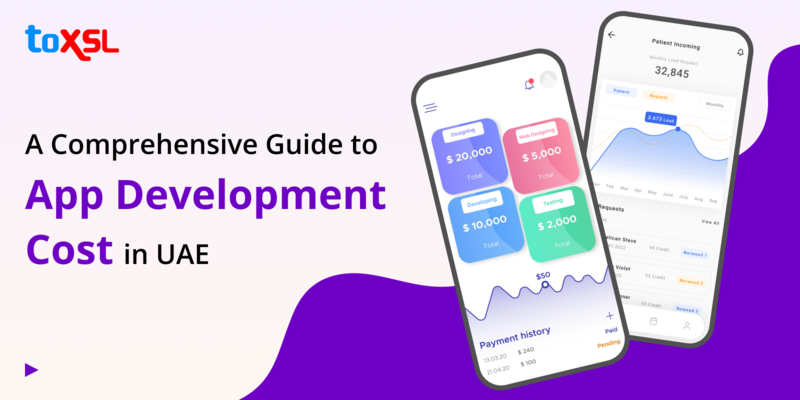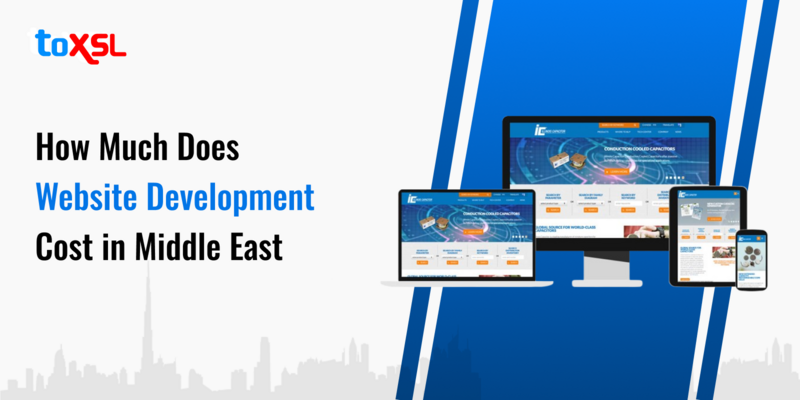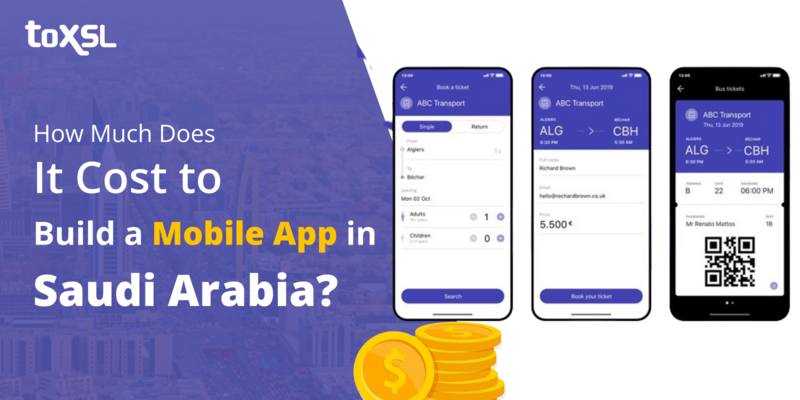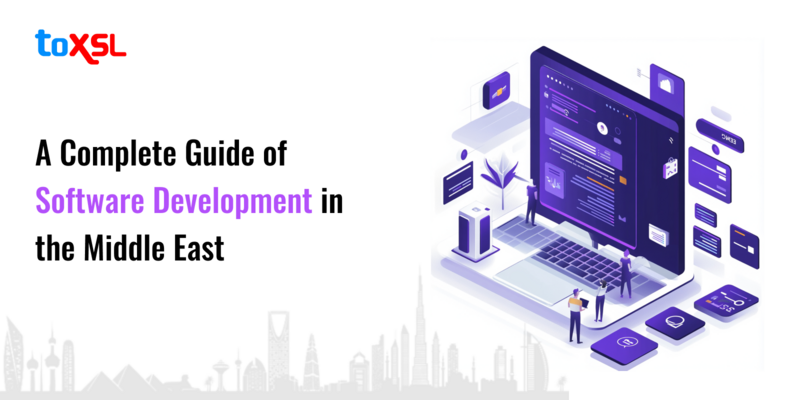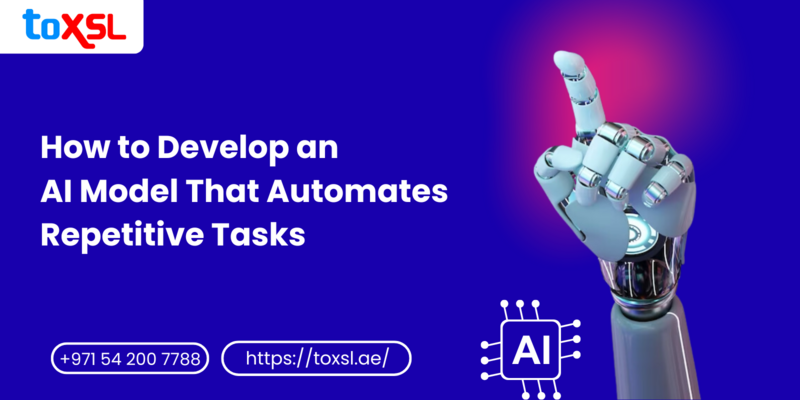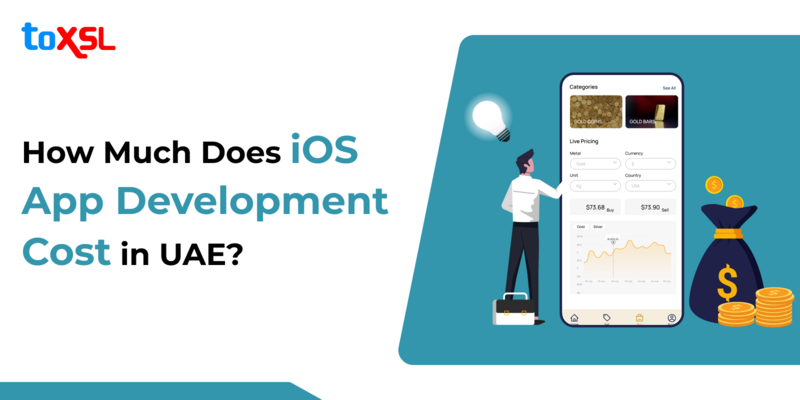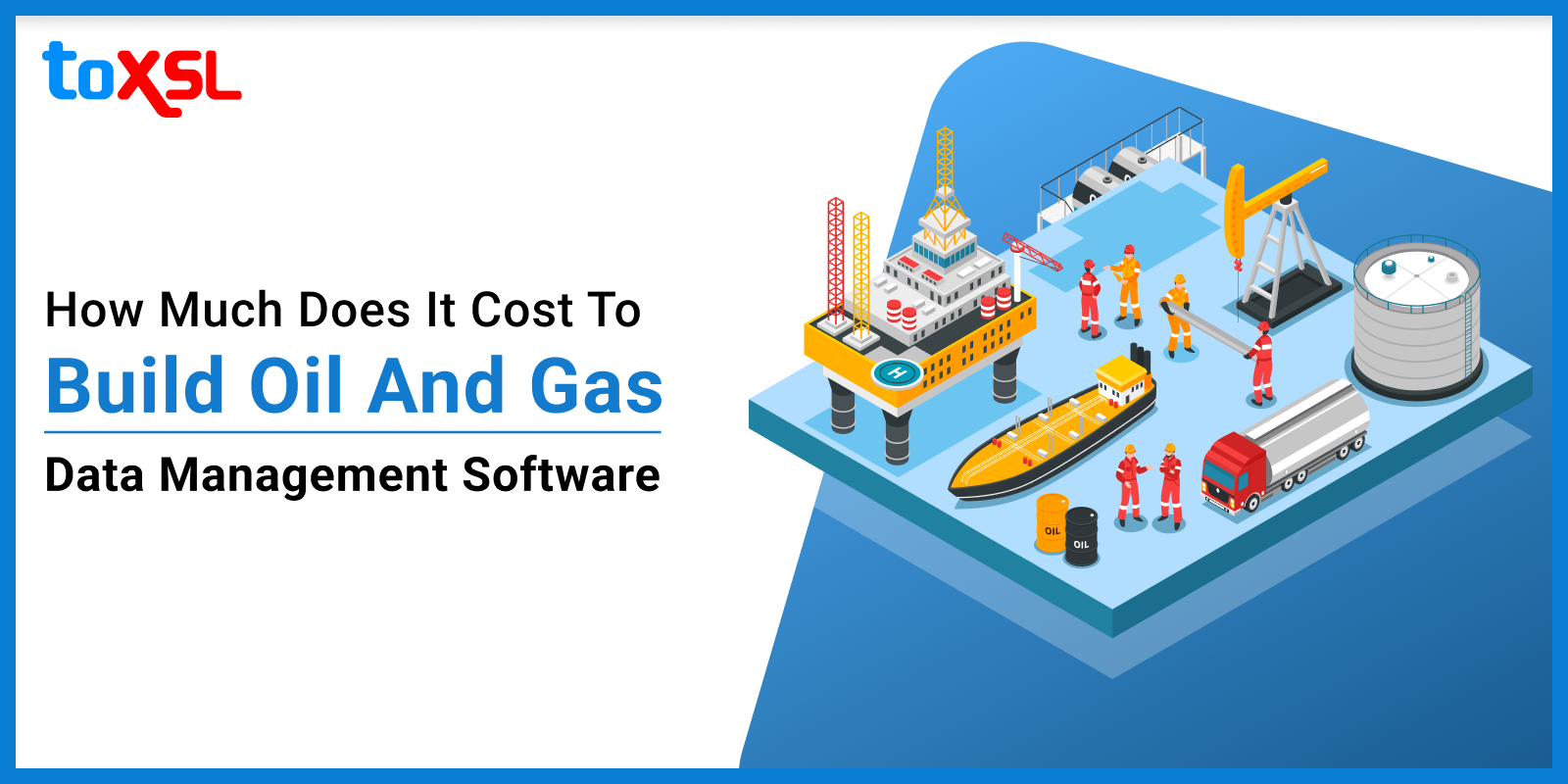
According to Future Market Insights, the oil & gas data management software market can hold on to the market at a strong CAGR of 15.3% by 2032. Another report by Statista says that the oil industry is projected to allocate more than $12 billion toward IT services by 2030, which is four times higher than the anticipated expenditure on advanced analytics.
In the oil and gas industry, data is crucial for making informed decisions, optimizing operations, and ensuring profitability. However, managing large volumes of data can be a challenge, especially when it comes to ensuring data accuracy, consistency, and accessibility across different teams and locations. This is where oil and gas data management software comes in – a tool that can help organizations streamline their data management processes, improve productivity, and gain valuable insights into their operations.
However, building such oil and gas data management software can be a complex and costly endeavor, requiring significant resources and expertise. However, taking the help of a software development company in Dubai can make the development of data management software easy. In this blog post, we will provide a detailed overview of the costs involved in developing oil and gas data management software, including the various factors that can impact the final cost.
Key Takeaways:
- The oil & gas data management software market is growing at a 15.3% CAGR, with the industry expected to allocate $12 billion toward IT services by 2030.
- Developing such software can cost between $10,000 and $150,000, depending on the scope and complexity.
- Key cost factors include functionality, customization, security, and integration with existing systems.
- Advanced features like AI and machine learning can drive up costs but enhance efficiency.
Oil & Gas Data Management Software : Cost Review
Before moving further in this blog, let us tell you that the overall cost to develop oil and Gas Data Management software ranges from $10,000 to $150,000 or more. Now, let's take a closer look at the estimated costs involved in developing oil and gas data management software. The following are some of the key cost components.
1. Analysis and Planning Phase : During this phase, the requirements and objectives of the oil & gas data management software are identified. This involves understanding the specific needs of the industry, such as data integration, visualization, and analysis capabilities. The key activities in this phase include conducting a thorough analysis of the current data management processes, defining project scope, setting goals, and establishing a roadmap for software development. This phase involves analyzing the company's current data management processes, identifying areas for improvement, and creating a detailed plan for the software. The cost can range from $5,000 to $20,000, depending on the complexity of the project.
2. Design and Prototyping Phase : in this phase, the design of the software development company in dubai is created based on the requirements gathered in the previous phase. This includes creating wireframes, user interface designs, database schemas, and architectural designs. Prototyping is often used to validate the design with stakeholders before moving on to full-scale development. The goal of this phase is to ensure that the software will meet the needs of users and stakeholders. Cost can range from $8,000 to $30,000, depending on the level of customization required.
3. Development Phase : The development phase involves building the oil & gas data management software based on the approved designs. This includes coding, database development, integration of third-party tools or systems, and implementing security measures. Agile methodologies are often used in this phase to allow for flexibility and adaptability to changing requirements. The cost can range from $10,000 to $100,000 or more depending on the size and complexity of the development team, the technology stack used, and the timeframe for the project.
4. Testing and Quality Assurance Phase : During this phase, the software is thoroughly tested to ensure it meets quality standards and functions as intended. Various types of testing such as unit testing, integration testing, system testing, and user acceptance testing are conducted to identify and fix any defects or issues. Quality assurance processes are implemented to maintain high standards throughout the development lifecycle. The cost can range from $5,000 to $10,000, depending on the complexity of the software and the level of testing required.
5. Maintenance and Support Phase : Once the oil & gas data management software is deployed, it enters the maintenance and support phase. This involves providing ongoing support to users, addressing any bugs or issues that arise post-deployment, implementing updates or enhancements based on user feedback, and ensuring the software remains secure and up-to-date with industry standards. These costs can range from $5,000 to $20,000, depending on the level of support required and the size of the Custom software development company team.
6. Additional Costs : Additional costs in developing oil & gas data management software may include expenses related to customization for specific industry needs, licensing fees for third-party tools or technologies, training costs for users and administrators, infrastructure costs for hosting and maintaining the software, and ongoing support and maintenance expenses. These costs can range from $5,000 to $10,000, depending on the level of customization required.
Oil & Gas Data Management Software: Cost Based on Application Type
The cost of developing oil and gas data management software can vary based on multiple factors, with the complexity of required features being a key determinant. Software that includes advanced functionalities like geological modeling, real-time sensor data analysis, and integration with financial systems will result in higher development expenses compared to simpler solutions.
Well, the integration of cutting-edge technologies like artificial intelligence (AI) and machine learning (ML) can significantly influence the cost of developing oil and gas data management software. These advanced systems can provide sophisticated data analysis, predictive modeling, and automation capabilities, which can enhance the functionality and efficiency of the software. However, implementing AI and ML requires specialized expertise, complex algorithms, and powerful computational resources, which can increase the development cost.
The basic application type includes data visualization and reporting; the cost ranges from $5,000 to $15,000. The whole development process takes up to 2–3 months to complete.
For intermediate application types, including features like advanced reporting, basic analytics, and mobile access, the cost ranges from $6000 to $20,000. The development process of intermediate apps can take up to 3–6 months to complete.
For advanced applications that include features like real-time integration, predictive analytics, and complex workflows, the cost of development can range from $8000 to $25,000. The time taken for the development process can take up to 9–12 months.
For enterprise applications that include features like large-scale deployments, multi-talent capabilities, and industry-specific customizations, the cost of such apps starts at $25,000. The time taken for the development process can take more than 12 months.
Factors That Impact Software Development Costs
The cost to build oil and gas data management software can vary significantly based on several factors. Developing oil and gas data management software involves complex processes and requires expertise in both the oil and gas industry and software development. Below are some of the key factors that influence the cost of building oil and gas data management software:
1. Scope of Functionality: The scope of functionality required in the oil and gas data management software is a crucial factor that impacts the overall cost. The more features, functionalities, and integrations needed, the higher the development costs will be. Features such as data visualization, real-time monitoring, predictive analytics, compliance management, and integration with existing systems can all contribute to increased costs.
2. Customization Requirements: Customization plays a significant role in determining the cost of building oil and gas data management software. Tailoring the software to meet specific industry requirements, compliance standards, and unique business processes can add complexity to the development process, thus increasing costs. Customization may involve creating bespoke modules, interfaces, or workflows tailored to the needs of the oil and gas company.
3. Data Security and Compliance: Data security is paramount in the oil and gas industry due to the sensitive nature of the information being handled. Implementing robust security measures, encryption protocols, and access controls and ensuring compliance with industry regulations such as GDPR or HIPAA can add to the development costs. Investing in secure infrastructure and regular security audits also contribute to higher expenses.
4. Integration with Existing Systems: Many oil and gas companies already have legacy systems or third-party applications in place. Integrating the new data management software with these existing systems requires additional effort in terms of compatibility testing, data migration, API development, and ensuring seamless communication between different platforms. The complexity of integration can impact the overall cost of development.
5. Scalability and Performance Requirements: Scalability and performance are critical considerations when developing oil and gas data management software. The ability of the software to handle large volumes of data, support multiple users concurrently, and scale as the business grows all influence the cost. Building a scalable architecture that can accommodate future growth without compromising performance often requires additional investment.
6. Technology Stack and Development Team Expertise: The choice of technology stack used for developing the software can also impact costs. Licensing fees for proprietary software or tools, as well as ongoing maintenance costs, should be factored into the overall budget. Moreover, hiring a skilled development team with expertise in both oil and gas domain knowledge and software development will also influence costs.
7. Project Timeline: The timeline for developing oil and gas data management software is another factor that affects costs. Rushed timelines may require additional resources or overtime pay for developers, project managers, or quality assurance professionals, leading to increased expenses. A well-planned project schedule that accounts for adequate testing and iteration cycles can help manage costs effectively.
Oil & Gas Data Management Software: Enhancing Efficiency in the Energy Industry
In the dynamic and complex world of the oil and gas industry, efficient data management is crucial for companies to stay competitive, compliant, and profitable. Oil & Gas Data Management Software plays a vital role in streamlining operations, optimizing decision-making processes, and ensuring regulatory compliance. This blog will delve into the key features of Oil & Gas Data Management Software that make it an indispensable tool for companies operating in this sector.
1. Centralized Data Repository : One of the fundamental features of Oil & Gas Data Management Software is its ability to create a centralized repository for all types of data generated across various operations within oil and gas companies. This includes seismic data, well logs, production data, reservoir information, and more. By consolidating all this data into a single platform, companies can eliminate silos, reduce duplication of efforts, and improve data accessibility for all stakeholders.
2. Data Integration Capabilities : Oil & Gas Data Management Software offers robust data integration capabilities that allow companies to seamlessly connect disparate systems and sources of data. This feature enables the software to pull in data from different departments, locations, and formats, harmonize it, and present a unified view to users. This integrated approach enhances data quality, accuracy, and consistency, leading to better decision-making across the organization.
3. Advanced Analytics Tools :Another key feature of Oil & Gas Data Management Software is its advanced analytics tools that enable companies to derive valuable insights from their data. These tools leverage technologies such as artificial intelligence, machine learning, and predictive analytics to identify patterns, trends, and anomalies in the data. By harnessing these insights, companies can optimize production processes, mitigate risks, and identify new growth opportunities.
4. Real-time Monitoring and Reporting : Oil & Gas Data Management Software provides real-time monitoring and reporting capabilities that empower companies to track key performance indicators (KPIs) and operational metrics in real time. This feature allows stakeholders to stay informed about the status of operations, identify issues proactively, and make timely decisions to address them. Real-time monitoring also enhances operational efficiency by enabling quick responses to changing conditions in the field.
5. Regulatory Compliance Support : Compliance with regulatory requirements is a critical aspect of operating in the oil and gas industry. Oil & Gas Data Management Software helps companies ensure compliance by providing features such as audit trails, version control, and data security measures. These features enable companies to track changes made to the data, maintain historical records for auditing purposes, and protect sensitive information from unauthorized access.
6. Asset Performance Management : Oil & Gas Data Management Software includes asset performance management capabilities that help companies optimize the performance of their assets, such as wells, pipelines, and facilities. By analyzing historical performance data and predicting future trends, companies can implement preventive maintenance strategies, reduce downtime, and extend the lifespan of their assets. This proactive approach to asset management leads to cost savings and improved operational efficiency.
7. Collaboration Tools : Effective collaboration is essential for success in the oil and gas industry, where projects are often large-scale and involve multiple stakeholders. Oil & Gas Data Management Software offers collaboration tools that facilitate communication, document sharing, and workflow management among team members. These tools enhance coordination between different departments, contractors, and partners involved in a project, leading to smoother operations and faster decision-making.
Conclusion:
Building oil and gas data management software can be a complex and costly endeavor, but companies in this industry need to stay competitive and efficient. By understanding the various factors that impact oil and gas data management software development costs in Dubai, asoftware development company in Dubaican better plan and budget for their software development projects. As a software development services provider, ToXSL Technologies has extensive experience in developing oil and gas data management software and can provide you with a detailed quote for your specific project. Contact our experts today to learn more about how we can help you streamline your data management processes using custom data management software and improve your operational efficiency.
FAQs
1. What is the average cost to develop custom CRM software?
The cost of developing custom CRM software can range significantly, typically falling between $30,000 and $300,000. This variation depends on factors such as the complexity of features, customization needs, and the development team's location and expertise.
2. How long does it take to develop a custom CRM?
The development timeline for a custom CRM can vary widely based on its complexity. A simple CRM might take a few weeks to a couple of months, while more complex systems could take several months to over a year to complete.
3. What factors influence the cost of custom CRM development?
Several key factors influence the cost, including:
- Features and Complexity: Basic features are less expensive, while advanced functionalities like AI integration or multi-channel communication increase costs.
- Development Team Location: Hiring developers from regions with lower labor costs can reduce expenses.
- Project Scope and Duration: Longer projects with more extensive requirements will naturally incur higher costs.

